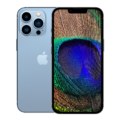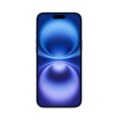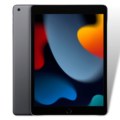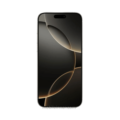- Home
- All Phones
- APPLE
- Apple iPhone 16 Pro Max
Apple iPhone 16 Pro Max
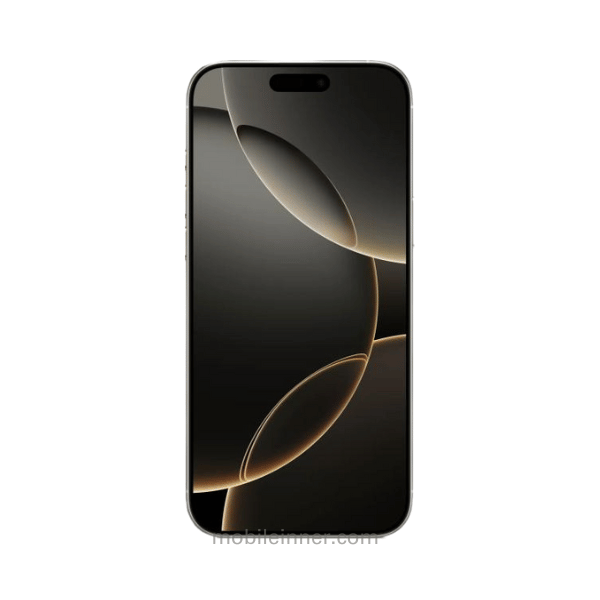


Full specification
General
| Device Type | iPhone |
| Model | A3296, A3084, A3295, A3297, iPhone17,3 |
| Released | 20, September 2024 |
Design
| Dimensions | 163 x 77.6 x 8.3 mm |
| Weight | 227 g |
| Build | Glass front, glass back, titanium frame |
| IP Rating | IP68 |
| Colors | Black Titanium, White Titanium, Natural Titanium, Desert Titanium |
Display
| Display Type Display Technology => A number of display technologies and types used in mobile phones => TFT (Thin Film Transistor), IPS (In-Place Switching), OLED (Organic Light Emitting Diode), AMOLED (Active-Matrix Organic Light-Emitting Diode), Super AMOLED (an even advanced version of AMOLED), Resistive Touchscreen (Resistive touchscreens contain two layer of conductive material with a very small gap between them which acts as a resistance), Capacitive Touchsceen (Capacitive touchscreen technology consists of a layer of glass coated with a transparent conductor) | LTPO Super Retina XDR OLED, 120Hz |
| Size | 6.9 inches |
| Resolution | QHD+, 1320 x 2868 pixels |
| Pixel Density Pixel Density (PPI) is refers to the concentration of pixels on a particular display, measured in pixels per inch (ppi). Pixel density is calculated by dividing the diagonal pixel resolution of a display by its diagonal size, higher pixel density better display quality. | 460 ppi |
| Protection Display Protection => Gorilla Glass is a special alkali-aluminosilicate glass shield with exceptional damage resistance that helps protect mobile displays from scratches, drops, and bumps of everyday use, It is always better to go for a smartphone with Gorilla Glass for that added protection and peace of mind. | Ceramic Shield glass |
| Features | 91.4% screen-to-body ratio, 120Hz, HDR10, 19.5:9 ratio, Hole-punch Notch, DCI-P3, Brightness - 1000, Max brightness HBM - 2000, Always-on display, Dolby Vision |
Software
| OS OS => Every computer system run on a base software called Operating System (OS). Operating System controls all basic operations of the computer (such as smartphone, PDAs, tablet computers and other handheld devices). The Operating System allows the user to install and run third party applications (apps), apps are used to add new functionality to the device. | iOS 18 |
| UI UI or user interface of a device is the look and feel of the on-screen menu system. How it works, its color scheme, how it responds to button presses, all of these things are part of the user interface. | iOS 18 |
Hardware
| Chipset Chipset is a group of integrated circuits designed to perform one or a more dedicated functions, often with real time computing constraints, Popular smartphones are equipped with more advanced embedded chipsets that can do many different tasks depending on their programming. | Apple A18 Pro (3 nm) |
| CPU CPU (Central Processing Unit) mostly known as processors, CPU processes instructions in order to carry out certain functions that make your device operate properly. Processors are often described as the brain of computers, smartphones and tablets, Smartphones and tablets rely on processors to carry out their every task, Processors are an incredibly important factor in selecting any type of computing device, including your smartphone. |
Hexa-core (2x • 4.04 GHz + 4x • 2.0 GHz) |
| GPU GPU (Graphics Processing Unit) is a single-chip processor designed to rapidly manipulate and alter memory to accelerate the creation of images in a frame buffer intended for output to a display, This includes things such as lighting effects, object transformations, and 3D motion. | Apple GPU (6-core graphics) |
Memory
| Card Slot Memory Card Slot is a special slot for inserting a memory card. Memory cards allow you to expand the phone's built-in memory, A memory card (sometimes called a flash memory card or a storage card) is a small storage medium used to store data such as text, pictures, audio, and video, for use on small, portable or remote computing devices such as mobile phones, mp3 players, digital cameras. | No |
| RAM RAM (Random Access Memory) is a type of computer memory that can be accessed randomly, any byte of memory can be accessed without touching the preceding bytes that allows information to be stored and accessed quickly from random locations. RAM is the most common type of memory found in computer systems, smartphones, tablets and other electronic devices. | 8 GB |
| RAM Type | LPDDR5X |
| ROM Internal Storage is a data storage space (flash memory) mostly used in smartphones, tablets and other electronic devices where operating system, apps, music, photos, videos, files and other user data Is stored. | 256GB, 512GB, 1TB |
| Type Design Type called form factor refers to a mobile phone's size, shape, and style as well as the layout and position of major components of phone. There are three major form factors seen in mobile phones => bar phones, folding phones and sliding phones. | NVMe |
| Variants | 256GB 8GB RAM, 512GB 8GB RAM, 1TB 8GB RAM |
Camera
| Primary Camera is able to capture photographs and usually videos, The most important characteristics of a camera are the resolution (measured in megapixels), lens focus type (fixed or automatic), higher megapixel cameras are known to capture higher quality photos, but not always a good measurement of the photos quality. |
Triple Camera 48 MP, f/1.8, 24mm (wide), dual pixel PDAF, sensor-shift OIS, (Sensor - , Sensor size - 1/1.28", Pixel size - 1.22µm) 12 MP, f/2.8, 120mm (periscope telephoto), dual pixel PDAF, 3D sensor‑shift OIS, 5x optical zoom, (Sensor - , Sensor size - 1/3.06", Pixel size - 1.12µm) 48 MP, f/2.2, 13mm (ultrawide), PDAF, (Sensor - , Sensor size - , Pixel size - 0.7µm) TOF 3D LiDAR scanner (depth) |
| Video |
4K@24/25/30/60/100/120fps, 1080p@25/30/60/120/240fps, 10-bit HDR, Dolby Vision HDR (up to 60fps), ProRes, 3D (spatial) video/audio, stereo sound rec. |
| Features | Dual-LED dual-tone flash, HDR (photo/panorama) |
| Selfie |
12 MP, f/1.9, 23mm (wide), PDAF, OIS, (Sensor - , Sensor size - 1/3.6", Pixel size - ) SL 3D, (depth/biometrics sensor) |
| Video | 4K@24/25/30/60fps, 1080p@25/30/60/120fps, gyro-EIS |
| Features | HDR, Dolby Vision HDR, 3D (spatial) audio, stereo sound rec. |
Media
| FM Radio | No |
| Loudspeaker | Yes, Stereo speakers |
| 3.5mm Jack | No |
| Alert Types | Vibration & Ringtone |
Connectivity
| Bluetooth Bluetooth is a wireless communications technology for exchanging data between mobile phones, headsets, computers and other network devices over short distances without wires, Bluetooth technology was primarily designed to support simple wireless networking of personal consumer devices. | 5.3, A2DP, LE |
| Wi-fi Wi-Fi is a popular wireless networking technology using radio waves to provide high-speed network connections that allows devices to communicate without cords or cables, Wi-Fi is increasingly becoming the preferred mode of internet connectivity all over the world. | Wi-Fi 802.11 a/b/g/n/ac/6e/7, Dual-band |
| Wi-fi Hotspot | |
| USB | USB Type-C 3.2 Gen 2, DisplayPort |
| GPS GPS The Global Positioning System is a satellite-based radio navigation system, GPS permits users to determine their position, velocity and the time 24 hours a day, in all weather, anywhere in the world, In order to locate your position, your device or GPS receiver must have a clear view of the sky. | Yes- GPS (L1+L5), GLONASS, GALILEO, BDS, QZSS, NavIC |
| NFC NFC (Near field communication) is a set of standards for smartphones and similar devices to establish peer-to-peer radio communications with each other by touching them together or bringing them into proximity, usually no more than a few inches. | |
| Infrared Infrared connectivity is an old wireless technology used to connect two electronic devices. It uses a beam of infrared light to transmit information and so requires direct line of sight and operates only at close range. |
Features
| Sensors Sensors are electronic components that detects and responds to some type of input from the physical environment. The specific input could be light, heat, motion, moisture, pressure and location, The output is generally a signal that is converted to use in computing systems, a location sensor, such as a GPS receiver is able to detect current location of your electronic device. |
Face ID, accelerometer, gyro, proximity, compass, barometer Ultra Wideband (UWB) support (gen2 chip) Emergency SOS, Messages and Find My via satellite Apple Pay (Visa, MasterCard, AMEX certified) |
Network
| Technology | GSM / CDMA / HSPA / EVDO / LTE / 5G |
| 2G Network | GSM 850 / 900 / 1800 / 1900 CDMA 800 / 1900 |
| 3G Network |
HSDPA 850 / 900 / 1700(AWS) / 1900 / 2100 CDMA2000 1xEV-DO |
| 4G Network |
B1, 2, 3, 4, 5, 7, 8, 12, 13, 17, 18, 19, 20, 25, 26, 28, 30, 32, 34, 38, 39, 40, 41, 42, 48, 53, 66 - A3296 B1, 2, 3, 4, 5, 7, 8, 12, 13, 14, 17, 18, 19, 20, 25, 26, 28, 29, 30, 32, 34, 38, 39, 40, 41, 42, 48, 53, 66, 71 - A3084 B1, 2, 3, 4, 5, 7, 8, 11, 12, 13, 14, 17, 18, 19, 20, 21, 25, 26, 28, 29, 30, 32, 34, 38, 39, 40, 41, 42, 48, 53, 66, 71 - A3295 B1, 2, 3, 4, 5, 7, 8, 12, 13, 17, 18, 19, 20, 25, 26, 28, 30, 32, 34, 38, 39, 40, 41, 42, 48, 66 - A3297 |
| 5G Network |
n1, 2, 3, 5, 7, 8, 12, 20, 25, 26, 28, 30, 38, 40, 41, 48, 53, 66, 70, 75, 76, 77, 78, 79 SA/NSA/Sub6 - A3296 n1, 2, 3, 5, 7, 8, 12, 14, 20, 25, 26, 28, 29, 30, 38, 40, 41, 48, 53, 66, 70, 71, 75, 76, 77, 78, 79, 258, 260, 261 SA/NSA/Sub6/mmWave - A3084 n1, 2, 3, 5, 7, 8, 12, 14, 20, 25, 26, 28, 29, 30, 38, 40, 41, 48, 53, 66, 70, 71, 75, 76, 77, 78, 79 SA/NSA/Sub6 - A3295 n1, 2, 3, 5, 7, 8, 12, 20, 25, 26, 28, 30, 38, 40, 41, 48, 66, 70, 75, 76, 77, 78, 79 SA/NSA/Sub6 - A3297 |
| SIM SIM (Subscriber Identity Module) is a small card that contains mobile network subscriber's account information. This allows the phone using the card to attach to a mobile network. The SIM card is most commonly associated with GSM and UMTS mobile networks. Moving a SIM card from one phone to another allows a subscriber to switch mobile phones without having to contact their mobile network carrier. SIM cards can also be used by a phone to store limited amounts of data, such as phone numbers and text messages. | Nano SIM, eSIM |
| Dual SIM |
Yes - Nano-SIM and eSIM - International Dual eSIM with multiple numbers - USA Dual SIM (Nano-SIM, dual stand-by) - China |
| Speed | HSPA 42.2/5.76 Mbps, LTE-A, 5G, EV-DO Rev.A 3.1 Mbps |
Battery
| Battery Type Battery Type => Cell phones run on various kinds of batteries depending on the manufacturer, phone size or shape and features. There are basically four types of cell phone batteries => Lithium Polymer, Lithium Ion, Nickel Metal Hydride and Nickel Cadmium. | Li-Ion (Lithium Ion) |
| Capacity Battery Capacity is a measure (typically in Amp-hr) of the charge stored by the battery, and is determined by the mass of active material contained in the battery. The battery capacity represents the maximum amount of energy that can be extracted from the battery under certain conditions. | 4685 mAh |
| Charging |
Wired, PD2.0, Fast charging |
| Wireless Wireless Charging (Inductive Charging) uses an electromagnetic field to transfer energy between two objects. This is usually done with a charging station. Energy is sent through an inductive coupling to an electrical device, which can then use that energy to charge batteries or run the device. |
25W wireless (MagSafe), 15W wireless (China only) 15W wireless (Qi2) 4.5W reverse wired |
| Placement | Non removable |
| Standby Standby Time is the total amount of time that you can leave your is fully charged, turned on and ready to send and receive calls or data transmissions before completely discharging the battery. | NA |
iPhone 16 Pro Max Pros and Cons
FAQ: Apple iPhone 16 Pro Max
- What are the standout features of the iPhone 16 Pro Max?
The iPhone 16 Pro Max boasts a 6.9-inch LTPO Super Retina XDR OLED display with an impressive 120Hz refresh rate. It’s powered by the new Apple A18 Pro chipset, ensuring top-tier performance. It features a 48 MP triple-camera system, perfect for high-quality photos and videos. Plus, the phone has a titanium frame, giving it a premium and durable build.
- How’s the camera quality on the iPhone 16 Pro Max?
It’s exceptional! The 48 MP main camera with sensor-shift OIS delivers sharp, vivid shots, even in low light. The periscope telephoto lens offers 5x optical zoom, and the ultra-wide lens is perfect for group shots and landscapes. There’s also LiDAR technology for improved depth sensing, making this a photographer’s dream.
- What storage options are available?
The iPhone 16 Pro Max comes in three storage variants: 256GB, 512GB, and 1TB. With these options, you have plenty of space for photos, apps, videos, and more. Though, unfortunately, there’s no expandable storage via a microSD card.
- Does the iPhone 16 Pro Max support fast charging?
Yes, it does! The phone supports fast wired charging with Power Delivery 2.0, so you can top up your battery quickly. It also supports 25W wireless charging via MagSafe and reverse wired charging for powering other devices.
- What colours does the iPhone 16 Pro Max come in?
You can choose from four sleek titanium finishes: Black Titanium, White Titanium, Natural Titanium, and Desert Titanium. These finishes give the phone a stylish, high-end look.
- How durable is the iPhone 16 Pro Max?
It’s built to last! The titanium frame and Ceramic Shield glass on the front and back make the phone resistant to drops and scratches. Plus, it has an IP68 rating, meaning it can handle water and dust exposure, so it’s perfect for everyday use in all environments.
- Does it have a good display?
Absolutely! The 6.9-inch Super Retina XDR OLED display offers rich colours, deep blacks, and a smooth 120Hz refresh rate. The screen supports Dolby Vision and HDR10, so whether you’re streaming movies or gaming, the visuals are crystal clear and immersive.
- Does it have a Face ID?
Yes, the iPhone 16 Pro Max features Face ID, Apple’s industry-leading facial recognition technology. It’s faster and more secure than ever, ensuring quick and safe access to your phone and apps.
- How’s the battery life on the iPhone 16 Pro Max?
The iPhone 16 Pro Max is equipped with a high-capacity Li-Ion battery. While Apple doesn’t specify the exact mAh, you can expect all-day usage with support for fast charging and 25W MagSafe wireless charging. It’s ideal for users who need reliable performance throughout the day.
- Does it have a headphone jack?
No, like most modern iPhones, the iPhone 16 Pro Max doesn’t have a 3.5mm headphone jack. However, you can use wireless earbuds like the AirPods or other Bluetooth 5.3 devices for audio.
- Does the iPhone 16 Pro Max support 5G?
Yes, it supports 5G connectivity, ensuring faster download and streaming speeds. Whether you’re using Sub-6 or mmWave, you’ll experience superior network performance.
- Is there a dual SIM option?
Yes, depending on the region, the iPhone 16 Pro Max supports dual SIM. International models use Nano-SIM and eSIM, while in the USA, it supports dual eSIM with the ability to use multiple numbers. In China, it has dual Nano-SIM support.
- Can the iPhone 16 Pro Max take spatial videos?
Yes, the iPhone 16 Pro Max introduces 3D spatial video and audio capture, offering an immersive video experience. This new technology lets you create content for viewing on Apple’s Vision Pro headset, adding a whole new dimension to your videos.
- Does the iPhone 16 Pro Max come with a charger?
Unfortunately, like recent iPhone models, the iPhone 16 Pro Max doesn’t come with a charging brick in the box. You’ll need to use a compatible USB Type-C charger to power it up.
User Reviews
Disclaimer Note
We cannot guarantee that the information on this page is entirely 100% accurate.

